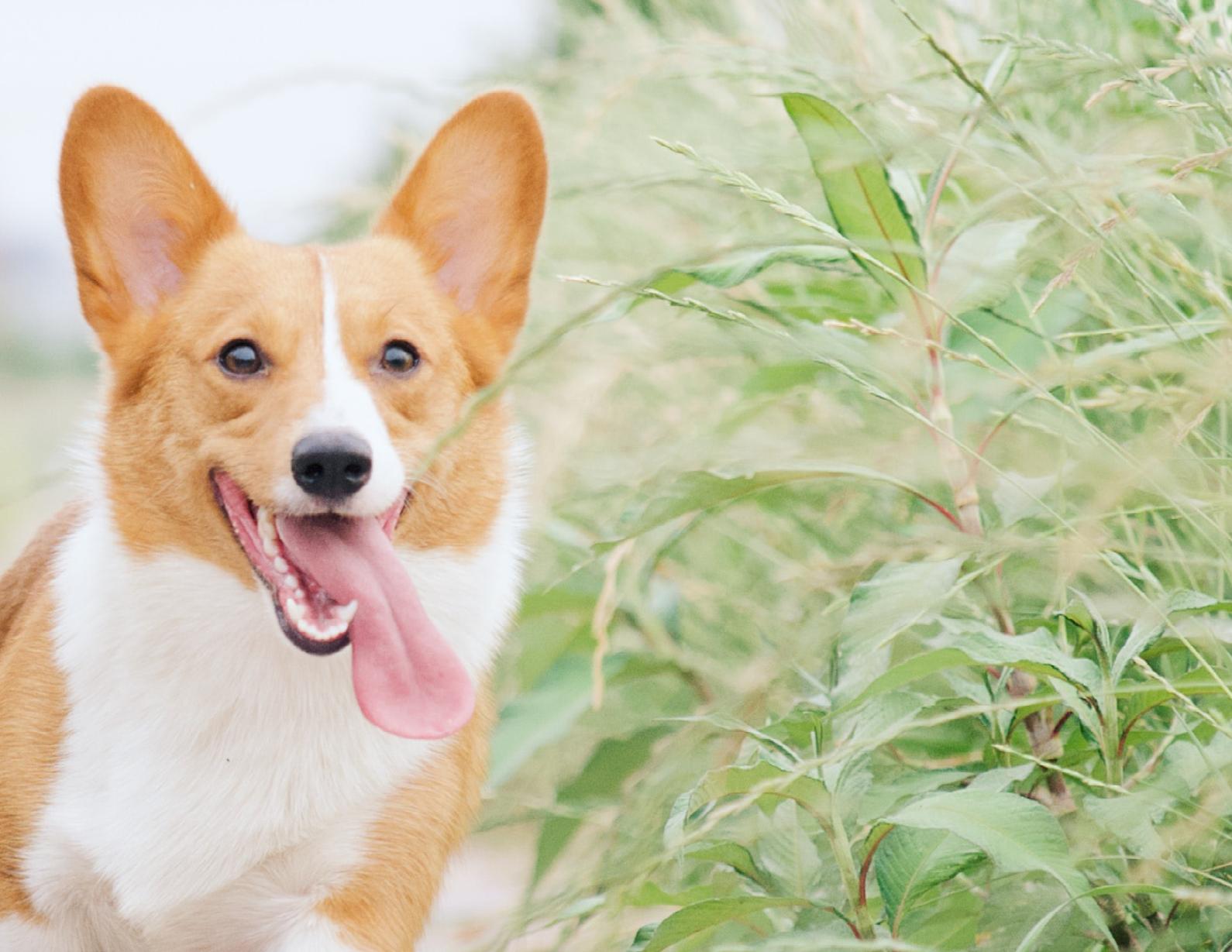Indigenous Pet Treats
Shades of Gray Indigenous Pet Treats

Business Development
Meet Keri Gray
Keri Gray grew up on her family’s farm in Lakefield, Ontario . Through her adolescent years, she spent her days helping her parents with the animals on the farm, and working at her family-owned butcher shop . Gray received her degree in agriculture from the University of Manitoba and later attended Red River College where she completed a business program . After returning to Ontario, Gray worked as an administrator for the Indigenous Studies Department at Trent University and then took a position as the learning centre coordinator for Alderville First Nation .
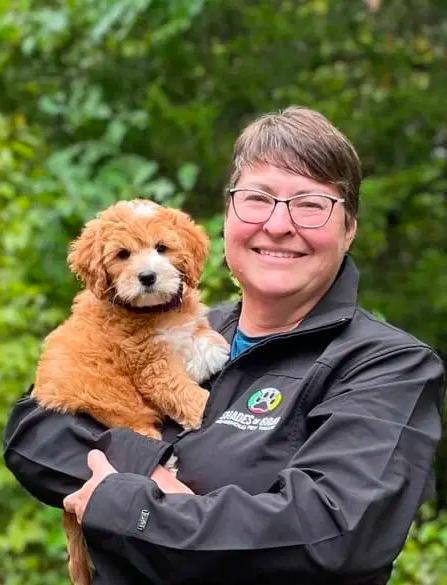
Business Development
Business Development
To understand how Shades of Gray Indigenous Pet Treats has evolved, it is imperative to first understand the development of Shades of Gray Rabbitry . Keri’s daughter, Kate, struggled horribly with severe food allergies . The family had gone gluten-free, dairyfree, egg-free, and nut-free in an attempt to control the allergies Kate was still having food reactions her family believed was linked to dyes and chemicals that are added to meat, as well as to the feed that the animals are being fed before butchering Gray couldn’t fathom removing meat from her family’s diets However, Gray was well-versed in the feed industry and did further research on how to best address these concerns She learned through her research that rabbits were an optimal animal to farm for many reasons, but in particular, to address the allergies her daughter was suffering from .
In 2012, Shades of Gray Rabbitry was started with the intent to provide for just the Gray family . However, in a few years, they began to supply grocery stores, butcher shops, local chefs, friends and neighbours who wanted more natural meat options .
The meat industry is quite wasteful; this violates the teachings from Gray’s heritage that all parts of the animal should be used Gray decided to use the parts of the rabbit that are not used for human consumption to make pet treats Soon, she was making treats for friends, family and neighbours
About the Business
Before turning her pet treat hobby into a business, Gray did research and took courses to become a certified raw nutritionist She then tested the product at local markets, events and dog shows to see if there was an appetite for it . The response she got was positive; it was clear to Gray that people were ready for a natural pet treat solution that their pets loved
In 2019, Shades of Gray Indigenous Pet Treats was registered as a business . It took about a year to build its facility By 2020, Gray was selling online The facility is 5,500 square feet, and all of the meat that is used for the treats comes from the rabbits on Gray’s farm The treat business was able to grow quickly because the Gray’s farm was already federally inspected .
The business was launched during the COVID-19 pandemic . It was extremely important to invest in good, reliable technology from the beginning, so an investment was made into a WooCommerce site that allowed them to sell online, even at the height of the pandemic
About the Product
Shades of Gray Indigenous Pet Treats has products for large dogs, small dogs and cats There are a variety of options on offer, including freeze-dried and dehydrated rabbit treats Customers can find dehydrated rabbit ears and feet as well as snack biscuits, strips, and rolls All of their products are 100 percent pure, and the entire animal is used; organs, bones, and meat Each of their products is certified as they have one through both federal and provincial inspection processes
The entire process stays within the Shades of Gray facility from breeding of the animals to fulfillment

Product Freshness
As part of her commitment to creating less food waste, Gray looked at the potential waste that could come from rabbit meat being sold to local grocers and restaurateurs . If the rabbit meat didn’t sell within 14 days, Shades of Gray Indigenous Pet Treats created a buyback program If the meat hadn’t been sold in 14 days, the store would freeze it and then sell it back to them to make treats . This was a win-win situation: stores weren’t creating waste and losing money on products, and Shades of Gray was able to keep their commitment to their quality and lessen waste
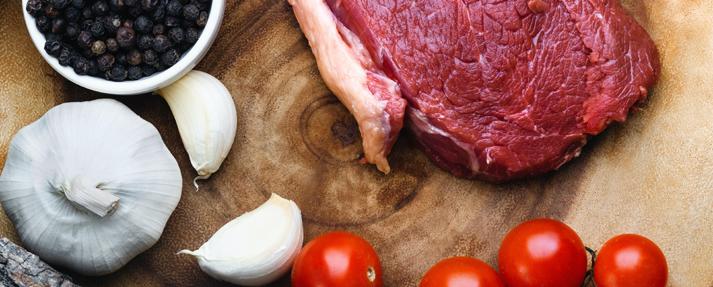
Organizational Structure

Shades of Gray Indigenous Pet Treats is a Certified Aboriginal Business The community needs businesses like this to offer diversity in employment opportunities . Currently, there are only gas stations, tobacco and cannabis shops providing employment opportunities
This sole proprietorship business is located off the reserve One of its primary mandates is focusing on hiring women in the community to provide them with a well paying, reliable job with benefits . Members of the team are trained in a variety of roles . Skill development is very important to Keri and she ensures that her team knows how to do everything
The only aspects of the business that Shades of Gray Indigenous Pet Treats doesn’t handle in-house are bookkeeping, branding and the maintenance and design of the website . They also did use an outside agency to help them develop their brand guide .

Branding
The logo and branding of Shades of Gray Indigenous Pet Treats were very purposeful . Gray wanted to ensure that it was developed with the company’s Indigenous roots and teachings in mind .
The name of the business, both for the pet treats and the rabbitry, pays homage to the family name: Gray The paw print and the colours of the logo both represent Indigenous culture It was important to build a brand that inspires the next generation to stay true to their roots and respect where they come from .
Risks and Opportunities
Risks
COVID-19 Pandemic
For any new business, choosing a launch date is always a challenge . But launching a business during a global pandemic comes with its own risks . But Gray was ready to launch .
The first threat was being short-staffed as a result of COVID-19 Both illnesses and exposures to the virus made planning for workforce shortages difficult Any staff shortages in the slaughterhouse have a significant impact on all other areas of the business
Restaurant shutdowns also slowed orders for rabbit meat . However, while that risk significantly impacted the rabbitry, it was actually helpful for the pet treats side of the business to better understand the demand for their product and their ability to meet that demand because .

Farming Risk
With any kind of farming, there is risk involved . In a rabbitry, if something happens to your barn of rabbits, you will likely lose the entire barn It takes a minimum six months to get back up to breeding capacity
Rabbits can be more difficult to farm than other farm animals such as chickens and cows . They require daily feeding and are not prone to use automatic feeding systems (Lukefahr et al , 2004) . Rabbits also require specialized housing to keep them cool in the summer and warm in the winter in colder climates (Lukefahr et al , 2004) These factors require more staff oversight and management, leading to higher costs . Rabbits are also prone to stress and disease, so having a proper euthanasia strategy is important to prevent the spread of disease amongst the animals
The cost of rabbit food and materials required to house and take care of rabbits continues to rise, and will continue to do so in the future
“While still a relatively new business, Shades of Gray Indigenous Pet Treats has already been nominated for awards in the pet treat industry . ”
Risks and Opportunities
Growth and Future Opportunities
Shades of Gray Rabbitry and Shades of Gray Indigenous Pet Treats do not mass produce products While this component helps them maintain their quality promise and ensures that animals are treated with the utmost respect, it does limit growth potential In order to preserve the integrity of their commitment to the humane treatment of their rabbits, they ensure that they do get a break between pregnancies to allow their bodies time to recover . Growth for a business of this nature requires significant succession planning, with a strong focus on space planning the barns .
While still a relatively new business, Shades of Gray Indigenous Pet Treats has already been nominated for awards in the pet treat industry It has also been invited to be featured in the centre aisles of several big-box stores; at this time, Gray had to decline due to limitations with their production capacity This could be an opportunity for future growth if Gray chooses to grow their barn capacity Gray is interested in growing the business into the United States market in the future . She is spending some time researching and connecting with government entities to find out what barriers must be overcome to achieve this target There are rules and regulations for exporting food products over the border An additional consideration is shipping time and shipping delays crossing the border . There would need to be assurances to guarantee that the product quality would not be compromised in any way .
For suppliers trying to enter the US market, there are different standards that must be met . It is required that all imported pet food meet the regulations of the Food and Drug Administration, and they are subject to inspection when they enter the United States (Medicine, 2022) . The ingredients and additives must be on the FDA’s approved list for them to be considered safe for consumption and labeled accordingly (Medicine, 2022) . Furthermore, the FDA requires food production facilities to be registered with the FDA and that there be prior notice to be provided to the FDA for each shipment of pet food into the US (Medicine, 2022) . For larger corporations with dedicated teams to handle these requirements, it is a simple process to ensure registration; however, for smaller producers, getting approval for shipping their products across the US border may be time and cost-prohibitive
Larger suppliers can maneuver this by having production facilities in both Canada and the United States, but this is often not the case for smaller providers These differences in regulations would require additional costs for packaging and labeling that may cause a barrier to entry into the US market for smaller independent pet food suppliers
Community Profile
Community Profile: Algonquins of Pikwàkanagàn First Nation

Geographic and Firmographic Information
The Algonquins of Pikwàkanagàn First Nation (AOPFN) (Algonquin language translation: Pikwàkanagàn
Omàmiwininiwak) is a proud and progressive community located in Ontario on the shores of Golden Lake and the Bonnechere River in Renfrew County, approximately one and a half hours west of Ottawa and one and a half hours east of Algonquin Park As of 2016, Pikwàkanagàn had an on-reserve population of 380, with approximately 1,560 members living off-reserve (2016 Census Aboriginal Community Portrait – Algonquins of Pikwàkanagàn First Nation, 2020) The AOPFN is also the only federally registered Algonquin community in Ontario, with the nine other recognized communities residing in Quebec . Pikwàkanagàn boasts of being the place of origin for the world’s largest birch bark canoe, the first Algonquin woman Chief in Canada and Algonquin actor Paul Benoit .
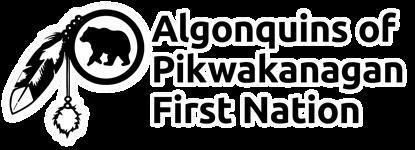
Community Profile
Beliefs and Values
The Algonquins of Pikwàkanagàn use several terms to refer to their people, such as Algonquin (relatives or allies/at the place of spearing fishes and eels from the bow of a canoe), Omàmiwinini (down-river people) and Anishinabek (original peoples/the good humans) Algonquin philosophies and spiritual beliefs are incredibly important to the AOPFN and reflects the values of respect, reciprocity, equality and thanksgiving by calling for individuals to only take what they need, give to receive, recognize that one is an equal part of the world around them and be thankful for everything one receives .
Many of the AOPFN’s teachings relate to the Creator and can be interpreted in several ways . Each person is encouraged to develop their own interpretation and relationship with the Creator because uniqueness creates meaning . The AOPFN is also guided by the Seven Grandfather Teachings and the Anishinaabe way of life, the principles of which are: to treat the earth and all that dwell upon it with respect, remain close to the Creator, show great respect for one’s fellow beings, work together for the benefit of all humankind, give assistance and kindness whenever needed, do what one knows is right, look after the well-being of mind and body, dedicate a share of one’s efforts to the greater good be truthful and honest at all times and to take full responsibility for one’s actions (Algonquins of Pikwakanagan First Nation, 2020) .
“Algonquin philosophies and spiritual beliefs are incredibly important to the AOPFN and reflects the values of respect, reciprocity, equality and thanksgiving by calling for individuals to only take what they need, give to receive, recognize that one is an equal part of the world around them and be thankful for everything one receives
Contemporary Community/Business Profile
Following the ratification of the Algonquins of Pikwakanagan Land Code and Individual Agreement with Canada in 2019, the AOPFN now manages its own reserve lands and resources in alignment with their customs, traditions, and practices . Through its economic development department, the AOPFN is engaged in several projects and initiatives to assist member businesses and generate revenues to improve infrastructure and quality of life for its members The primary means of achieving this objective have been establishing the AOPFN General Partner and the AOPFN Limited Partnership, both of which have enabled the AOPFN to establish subsidiary companies and engage in a variety of renewable energy initiatives for the benefit of the community .
Indigenous Values and Culture
Shades of Gray Indigenous Pet Treats prides itself on being a Certified Aboriginal Business . This designation allows them to use the Canadian Council for Aboriginal Business’ logo to identify the business as such The Algonquin Philosophy is deeply woven into every aspect of the business:
“Only take what you need; give in order to receive; recognize that you are an equal part of all that is; be thankful for everything you get . It is encouraged that each person develops their own special relationship with the Creator . It is this difference, this uniqueness with the Creator that creates meaning for the Algonquin Peoples” (Indigenous Heritage - Shades of Gray - Canadian Pet Treats, n d .) .
Shades of Gray Indigenous Pet Treats shows their commitment to their Indigenous roots in several ways . They have a strong dedication to staying true to a lean manufacturing process and ensuring that they only use what they need Within the organization, they dedicate time to learning and talking about the Seven Grandfather Teachings . Throughout the day, they stop and take time to appreciate the land and people around them and to reflect, share together in walks, be a part of the community and go to events and ceremonies . They operate the business with full transparency and with good intentions
“Shades of Gray Indigenous Pet Treats shows their commitment to their Indigenous roots in several ways . They have a strong dedication to staying true to a lean manufacturing process and ensuring that they only use what they need . ”
The Anishinabe Way to Live
• Treat the earth, and all that dwell upon it, with respect
• Remain close to the Creator
• Show great respect for your fellow beings
• Work together for the benefit of all mankind
• Give assistance and kindness whenever needed
• Do what you know is right
• Look after the well-being of mind and body
• Dedicate a share of your efforts to the greater good
• Be truthful and honest at all times
• Take full responsibility for your actions
(Indigenous Heritage - Shades of Gray - Canadian Pet Treats, n.d.).
Background
Canadians love their pets It is estimated that there are roughly 28 million pets in Canada By 2025, there will be approximately 28 .5 million pets in Canada (Canada, 2021) Fish accounted for a third of the pet population in Canada, while cats and dogs are not far behind at just under 30 per cent and 26 per cent respectively (Canada, 2021) . It is expected that dogs (small dogs in particular) will see the largest growth in ownership in the coming years (Canada, 2021) .
Many pet owners view their furry friends as extended family members, resulting in a roughly USD$9 billion pet industry in Canada, with people spending the most on pet food (Fraser, 2022) . Dry dog food accounts for the largest market share, at roughly $2 8 billion, representing roughly 75 percent of the dog food sold in Canada (Canada, 2021) . Although there are more cats than dogs in Canada, the total sales of dry cat food are lower than that of dry dog food, at roughly $1 .4 billion, and 61 per cent of all the cat food sold in Canada (Canada, 2021)
Canada imports roughly 50 percent of its pet food, with close to 97 percent of imported food coming from the United States (FAQ
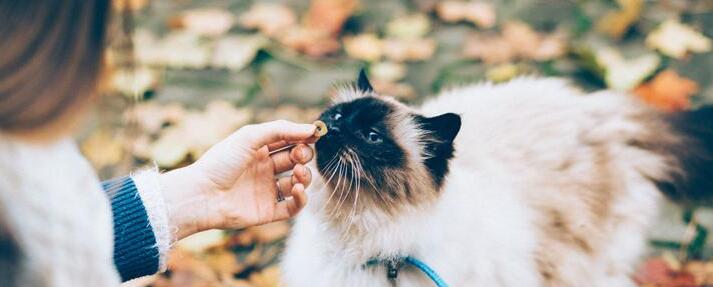
| Pet Food Association of Canada, n .d ) . Although Canada has a strong pet food industry, the top two companies, Nestle and Mars Inc , control close to 36 percent of the pet food market in Canada (Canada,2021) .
Canadians are still purchasing pet food at traditional brick-andmortar retail outlets, with close to 77 percent of sales conducted in the retail setting . E-commerce sales make up roughly 22 percent of pet food sales in Canada (Canada, 2021) The Canadian pet supply chain is dominated by larger chains, most notably PetSmart and PetValu, with the remaining supply coming in the form of smaller retail outlets and traditional grocery outlets (Bhattacherjee, 2021) .

Trends
If our pets could talk, it’s quite possible that many of them would have been happy with the extended time spent with their owners due to work-from-home arrangements . Owners are much more aware of the nutritional choices they make for their animals . Companies have had to adapt to the emergence of customers looking for better quality pet food (Hein, 2014) .
This trend extends to dog treats Dog treats have seen huge growth from 2016 to 2022 and are expected to continue to grow at close to 6 percent CARG (Compound Annual Growth Rate) in 2025, as dog owners will continue to look for quality ingredients in the treats they offer their pets There is potential for growth domestically and internationally with specialty products that provide top-notch and quality ingredients that pet owners can feel confident in (Canada, 2021)
More millennials are beginning to own pets As more millennials move to urban dwellings, smaller pets, such as cats and smaller dogs, will continue to see larger growth compared to other animals (Canada, 2021) . Millennials often turn to social media when making decisions to buy products As a result, pet food companies will need to have a stronger digital presence and continue to differentiate themselves from the competition (How Millennials Are Changing the Canadian Pet Market - StreetDog Marketing, 2021)
Challenges
Like other industries, the pet food industry faces its own unique set of challenges . In particular, the pet food industry is highly competitive and favors larger suppliers and distributors The Canadian market is controlled by large corporations like Mars and Nestle . Canadian company Champion Petfoods is not far behind its international counterparts For smaller suppliers, overcoming this market saturation can be difficult but not impossible Smaller suppliers will need to tap into the market demand for niche products that are healthier and made from quality ingredients to differentiate themselves from industry leaders .
“Dog treats have seen huge growth from 2016 to 2022 and are expected to continue to grow at close to 6 percent CARG
(Compound Annual Growth Rate) in 2025”
References
References
2016 Census Aboriginal Community Portrait – Algonquins of Pikwàkanagàn First Nation . (2020, October) Statistics Canada. https:// www12 .statcan .gc .ca/census-recensement/2016/dp-pd/abpopprof/infogrph/infgrph cfm?LANG=E&DGUID=2016C1005201&PR=35
Algonquins of Pikwakanagan First Nation . (2020, August 24) Culture • . Algonquins of Pikwakanagan . https://www . algonquinsofpikwakanagan com/culture/
Bhattacherjee, U (2021, December) . 23 Pawesome Pet Industry Canada Statistics for 2021. https://reviewlution ca/resources/petindustry-canada-statistics/
Canada, A , and A -F (2021, June) Sector Trend Analysis – Pet food trends in Canada Agriculture .canada ca . https://agriculture canada ca/en/international-trade/market-intelligence/reports/sector-trend-analysis-pet-food-trends-canada#g
DeAngelo, K , & Haskell, S . (2022, January) . In a Dog Eat Dog World, Are Regulations Strong Enough to Protect Your Pup? Michigan State University . https://www .canr .msu .edu/news/in-a-dog-eat-dog-world-are-regulations-strong-enough-to-protect-your-pup
FAQ | Pet Food Association of Canada. (n d .) . Retrieved June 22, 2022, from https://pfac .com/faq/
Fraser, C . (2022, June) 27 Canada Pet Industry Statistics to Know in 2022: Trends, Market Size & More. https://petkeen com/petindustry-statistics-trends-canada
Hein, T . (2014, June) Dinner is Ready https://www .foodincanada com/features/dinner-ready/
How Millennials are Changing the Canadian Pet Market - StreetDog Marketing. (2021, March) https://streetdog ca/how-millennialsare-changing-the-canadian-pet-market/
Indigenous Heritage - Shades of Gray - Canadian Pet Treats. (n .d .) Shades of Gray https://indigenoustreats ca/indigenousheritage/
Lukefahr, S . D , Cheeke, P . R , McNitt, J I ., & Patton, N M (2004) . Limitations of intensive meat rabbit production in North America: A review . Canadian Journal of Animal Science, 84(3), 349–360 . https://doi .org/10 .4141/a04-002
Acknowledgements
Land Acknowledgement
Humber Institute of Technology and Advanced Learning and the Canadian Council for Aboriginal Business is on the treaty lands and traditional territory of the Mississaugas of the Credit and homeland of Anishinaabe, Haudenosaunee, and the Wendat peoples and is now home to many diverse First Nations, Inuit and Métis peoples . We also acknowledge that Toronto is covered by Treaty 13 with the Mississaugas of the Credit .
Humber Institute of Technology and Advanced Learning
Audrey Wubbenhorst, Professor and Principal Investigator
Lisa Post, Research Assistant
James Henebry, Research Assistant
Canadian Council for Aboriginal Business:

Andy Avgerinos, Research Project Manager
Lucas Alexiou, Research Associate
Cody Lewis, Research Coordinator
The research team would like to thank Keri Gray of Shades of Gray Indigenous Pet Treats who generously shared her time, experiences, and knowledge throughout the development of this case study .
Suggested Citation
Wubbenhorst, A , Post, L ., & Henebry, J . (2022) . Indsights - A Window into the Indigenous Economy: A Case Study on Shades of Gray Indigenous Pet Treats (pp . 1-11) Toronto, Ontario: Humber Institute of Technology and Advanced Learning . Retrieved from www .indsights ca
Study: Shades of Gray Indigenous Pet Treats

